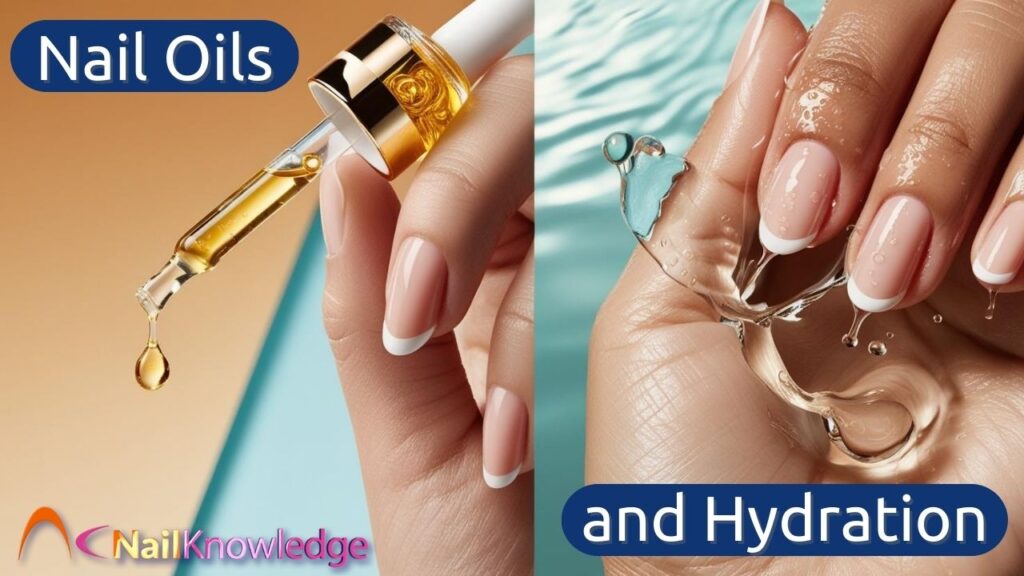La verdad sobre los aceites para uñas y la hidratación
¿Te has preguntado alguna vez si esos elegantes aceites para uñas hidratar your nails? It’s a question that stumps even seasoned beauty professionals, and it’s easy to see why. The word hidratar gets thrown around so much in beauty marketing that it’s started to mean a hundred different things. Let’s break it all down and uncover what oils really do for nails, and what they don’t.
What Does “Moisturise” Actually Mean?
Hidratar algo significa literalmente aumentar su contenido de agua — to add water, not oil. That’s a key point! Here’s what you need to know:
- Humedad = Aguano aceite.
- Hidratantes son productos que ayudan a aumentar el contenido de agua en la piel, las uñas o el cabello.
- Los productos hidratantes suelen contener agua y ingredientes que ayuden a retener el agua.
Cuando la gente dice, “this oil is so moisturising,” lo que a menudo quieren decir es que ayuda a su piel o uñas sentir menos sequedad, but not that it’s adding water. Here’s why that distinction matters.
Can Oils Moisturise Nails? Not Exactly…
Los propios aceites no contain water. They’re anhidroque significa sin agua. Así que técnicamente can’t moisturise. Pero en su lugar hacen algo muy inteligente:
- Los aceites forman una barrera en la superficie de la uña o de la piel, impidiendo que salga el agua existente.
- Esta barrera ralentiza trans-epidermal water loss (TEWL)que es un término elegante para referirse a la forma en que el agua se evapora a través de la piel o la superficie de las uñas.
- So, while oils don’t add water, they help your body retener su propia humedad natural.
Think of it like wrapping your hands in cling film. It doesn’t add water, but it keeps what’s already there from escaping. That’s what oils do for nails and skin.
Términos importantes
Here’s a simple breakdown of some of the key terms Doug Schoon mentioned, explained in everyday language:
🧴 Hidratar
- Definición: Para aumentar el contenido de agua de la piel, las uñas o el cabello.
- Dato curioso: Only products that contain water, like creams or lotions, can actually hidratar.
- Concepto erróneo: Oils can’t hidratar — they cerrar humedad, que es un trabajo totalmente diferente.
🧈 Agentes oclusivos
- Definición: Ingredientes que forman una barrera protectora en la superficie para impedir que el agua se evapore.
- Ejemplos: Mineral oil, petroleum jelly, silicone oils.
- Piénsalo así: A raincoat for your skin. It doesn’t hydrate, but it keeps water from escaping.
- Para las uñas: Los aceites oclusivos pueden mantener las uñas flexibles and prevent cracking by stopping too much water from leaving the nail plate.
🧪 Emulsionantes
- Definición: Ingredientes especiales que ayudan a que el aceite y el agua se mezclen.
- Ejemplos: Se encuentra en lociones, cremas, mayonesa (¡sí, de verdad!) y aliños para ensaladas.
- Por qué es importante: Sin emulsionantes, los ingredientes de base acuosa y oleosa se separarían. Con ellos, se obtienen productos suaves y estables capaces de hidratar y proteger.
💧 Pérdida de agua transepidérmica (TEWL)
- Definición: Proceso natural por el que el agua se desplaza desde el interior del cuerpo hasta la superficie de la piel o las uñas y se evapora.
- Por qué es importante: Cuanto más TEWL experimente, más seca sentirá la piel o las uñas.
- Cómo ayudan los aceites: Al formar una barrera, los aceites ralentizan el TEWL, ayudando a mantener la humedad dentro y la sequedad fuera.
🌊 Anhidro
- Definición: Sustancia que no contiene agua.
- Ejemplo: Todos los aceites, desde el de coco hasta el de jojoba, son anhidros.
- Significado para las uñas: Oils won’t add moisture (water) on their own, but they conservar what’s already there.
So, What’s the Best Way to Keep Nails Hydrated?
Here’s the ideal nail care routine if you’re aiming for proper hydration and flexibility:
- Aplica primero una crema hidratante o loción a base de aguapara introducir agua real en la placa de la uña.
- Séllelo con una buena aceite de uñas, like jojoba or avocado oil, which can penetrate and help trap moisture beneath the surface.
- Repetir regularmente, especially after washing hands, using sanitiser, or exposure to cold weather or harsh chemicals.
Reflexión final: Los aceites son aliados, pero no hidratantes
Al final, la cuestión do los aceites hidratan las uñas se reduce a comprender su verdadera función, no como hidratantes, sino como protectores que ayudan a retener la humedad..
They’re brilliant at:
- Fijar la hidratación
- Aumentar la flexibilidad de las uñas
- Reducir la fragilidad
- Mejorar el tacto y el aspecto general de las uñas
So the next time you reach for that aceite para cutículas, remember, it’s not moisturising, it’s proteger — and that’s just as important.


